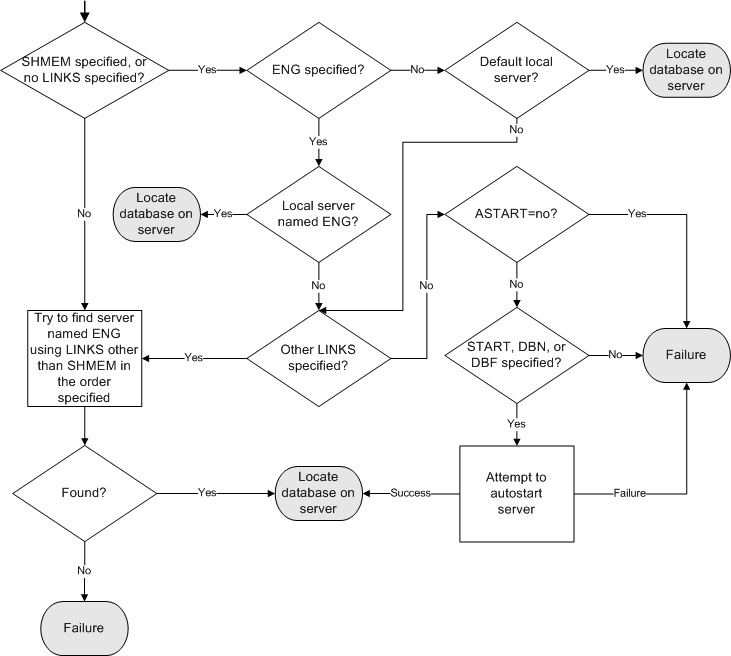SQL Anywhere searches for the server name specified in the ServerName (ENG) connection parameter. SQL Anywhere searches for a default server if the ServerName (ENG) connection parameter is not used, and the CommLinks (LINKS) connection parameter is not specified or if the CommLinks (LINKS) connection parameter is specified and includes Shared Memory.

If SQL Anywhere locates a server, it tries to locate or load the required database on that server. See Locating the database.
If SQL Anywhere can not locate a server, it may attempt to start a personal server, depending on the connection parameters.
For local connections, locating a server is simple. For connections over a network, you can use the CommLinks (LINKS) connection parameter to tune the search in many ways by supplying network protocol options.
You can specify a set of network protocol options for each network protocol in the argument to the CommLinks (LINKS) connection parameter.
Each attempt to locate a server involves two steps. First, SQL Anywhere looks in the server name cache to see if a server of that name is available (this step is skipped if the value of DoBroadcast is none). Second, it uses the available connection parameters to attempt a connection.
If the server is autostarted, information from the START, DBF, DBKEY, DBS, DBN, ENG, and AUTOSTOP connection parameters are used to construct the options for the autostarted server.
If the server has an alternate server name, you can only use the alternate server name to connect to the database that specified the alternate server name. You cannot use the alternate server name to connect to any other databases running on that database server. See -sn database option.
| Discuss this page in DocCommentXchange. Send feedback about this page using email. |
Copyright © 2009, iAnywhere Solutions, Inc. - SQL Anywhere 11.0.1 |